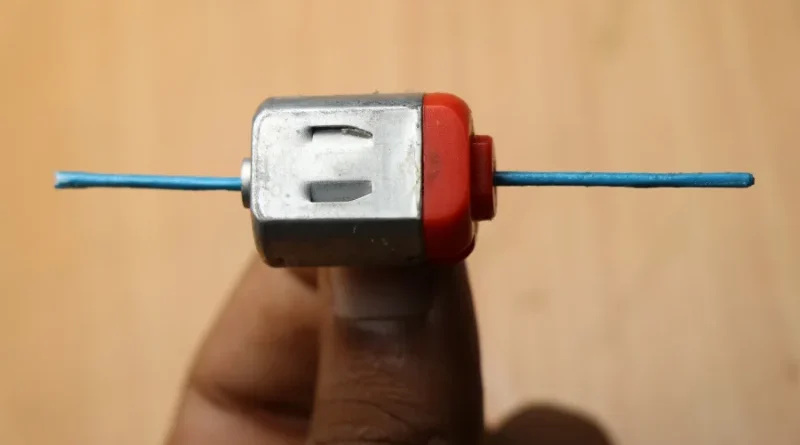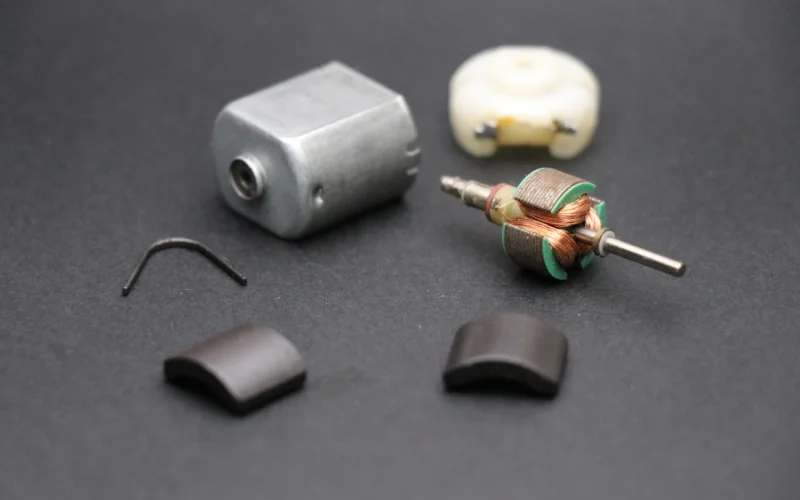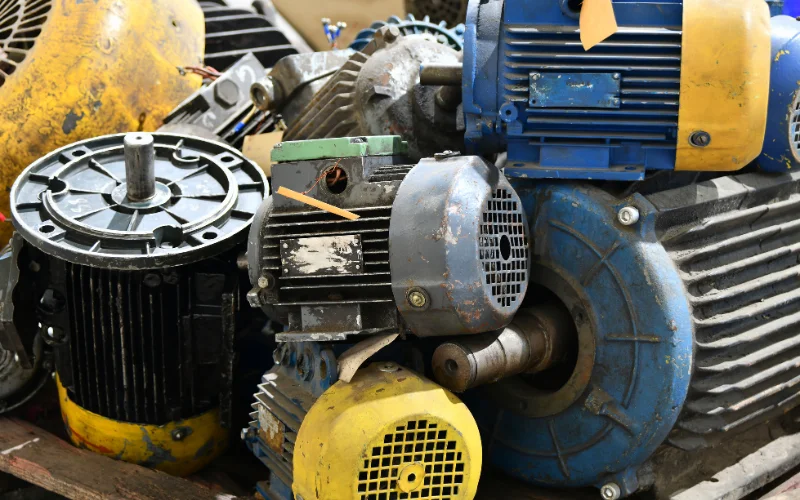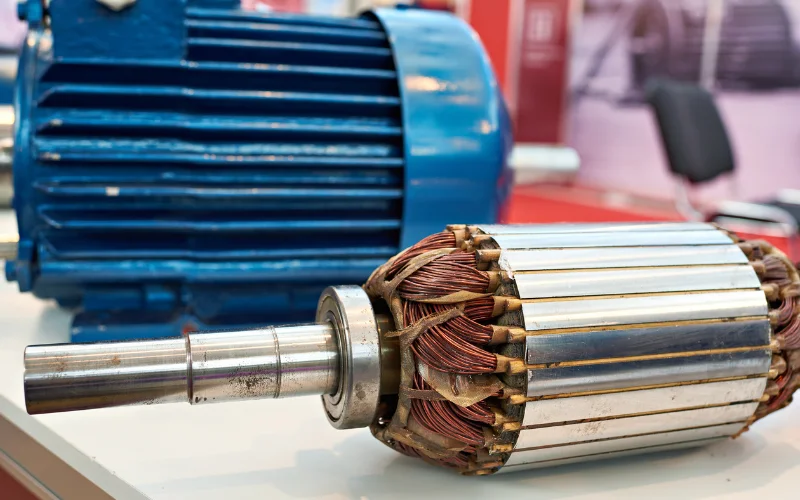
At the heart of this journey is the dynamic interplay between magnetic and conductive fields, a dance that gives rise to the remarkable phenomenon of later electromagnetic fields. The deeper we dig, the more we discover how crucial this opposing force is to the behavior and efficiency of engines. From generators that convert motion into energy to motors that convert electrical energy into action, we are witnessing the dual role of electromagnetism in shaping our technological landscape.
Back EMF in DC Motors: Back Voltage

As the anchor of a DC motor rotates under the influence of driving torque, the anchor conductor moves over the magnetic field. Therefore An electromotive force is induced in them, as in a generator – the induced electromotive force acts in the opposite direction to the applied voltage V ( Lenz's Law ) and is called back EMF E b A back emf E b = (PΦZN/60A) is always a value smaller than the applied voltage V, although this difference is small when the motor is running under normal conditions.
Electromotive force and potential difference
Electromotive force: electricity catalyst
Electromotive force, often abbreviated as EMF, is a driving force responsible for initiating and maintaining the flow of electrical current in a circuit. Despite its name, EMF is not a force, but rather a measurement of voltage. It represents the conversion of energy per unit charge as it flows through a circuit. EMFs are important for overcoming resistance and establishing current flow, often from energy sources such as batteries, generators or solar cells.
Potential Difference: Energizing Flow
Potential difference, also known as voltage, measures the difference in electrical potential energy between two points in a circuit. The force drives charges from a point of higher potential to a point of lower potential, facilitating the flow of electric current. This difference in electrical potential is responsible for the impulse that drives electrons along conductive paths and allows the production of useful work, such as: B. powering devices and systems.
Understand the relationship
EMF and potential difference are related but different concepts. While the EMF initiates current flow, the potential difference maintains and directs that flow. EMF is the driving force, while potential difference is the effect of that driving force in action. Think of EMF as the shock that makes a car roll down a hill, and potential difference as the speed of the car as it rolls down the hill.
Applications in circuits and devices
EMF is often used in circuits to describe the voltage produced by power sources, while potential difference characterizes the voltage drop across components such as resistors, capacitors, and inductors. In practice, understanding both concepts is critical for engineers and technicians when designing and analyzing electrical systems to ensure that energy is transferred efficiently and that devices function as intended.
A double function: generator and engine dynamics

When the armature conductor crosses the magnetic field lines during rotation, there is a parallel with the operation of a generator. An electromagnetic field is induced in the anchor conductors, which generates an electromotive force. This induced electromotive force essentially acts as a counter force, creating an opposite effect on the original applied voltage, as dictated by Lenz's law.
Generators: converting motion into energy
In the world of generators, the phenomenon of dual function manifests as the conversion of mechanical movement into electrical energy. When a generator's rotor is turned, whether by automated means such as turbines, or by other forms of energy, the magnetic field interacts with the rotor's conductors. This interaction induces a voltage and creates an electromagnetic force (EMF) at the generator terminals. Here the device assumes its function as a generator and converts kinetic energy into electrical energy ready for transmission and use.
Conversion of electrical energy into motion
In the motor context, the phenomenon of dual function is reversed. Now the device works like a motor and uses electrical energy to create movement. An electric current flows through the motor coils and creates a magnetic field. This magnetic field then interacts with the field of permanent magnets or electromagnets, resulting in a rotating force called torque. This torque sets the engine rotor in motion, converting electrical energy into mechanical movement.
United by electromagnetism
The dual function of generators and motors is based on the principles of electromagnetism. In both cases, the interaction of magnetic and conducting fields creates voltage and current. This unit forms the backbone of electrical machines and allows the transfer of energy between the mechanical and electrical areas.
Implications and applications
Understanding this dual role has profound implications for multiple industries. Engineers and scientists use this phenomenon to develop devices that power electricity generation, transportation systems, industrial machines, and more. The principles underlying this duality enable the development of energy-efficient technologies that support our modern way of life.
Back EMF occurs
This counter electromotive force, also known as counter-EMF (Eb), represents a crucial aspect of the behavior of DC motors, it is expressed mathematically as Eb = (PΦZN/60A), where P represents the number of poles, Φ den denotes. magnetic flux, Z is the number of conductors in the armature, N denotes the rotational speed and A represents the number of parallel paths within the armature.
A fascinating dynamic: effects on engine performance

The relationship between the applied voltage (V) and the back emf (Eb) determines the overall performance of the DC motor. As the motor accelerates, Eb increases due to the higher magnetic flux turn-on rate. According to the V-Eb equation, this results in a reduced net voltage across the motor. Consequently, the motor current decreases, which complies with Ohm's law (I = V/R) and contributes to efficient motor operation.
There is a fascinating dynamic in the field of electric motors that strongly influences their performance, efficiency and behavior. This dynamic revolves around the concept of reverse electromotive force (EMF), an essential and central phenomenon for motor dynamics.
Understanding Back EMF
Back EMF is caused by the interaction between a rotating armature and the magnetic field in a motor. As the armature rotates, it cuts the magnetic flux lines and induces a voltage in the conductors. This induced voltage neutralizes the applied voltage that drives the motor according to Lenz's law.
A self-regulating mechanism
The effects of counter-EMF on motor behavior become particularly clear when considering its influence on the overall dynamics of the circuit. As the motor accelerates, the rate of change of the magnetic flux linkage increases, resulting in a stronger back EMF. This countervoltage is subtracted from the externally applied voltage, reducing the net voltage in the motor. Consequently, the motor current, determined by Ohm's law, decreases proportionally and acts as an automatic mechanism that prevents excessive current surges as speed increases.
Efficiency and performance improvements
The fascinating dynamics created by back EMF have a significant impact on engine efficiency and performance. By naturally limiting current, back EMF prevents overheating and wasting energy in the motor. This inherent control ensures stable operation and optimal energy utilization, contributing to the engine's longevity and overall efficiency.
Customize engines for specific requirements
Engineers use their understanding of back EMF to design motors that meet specific application requirements. Engineers can optimize motor characteristics such as speed control, torque output, and energy efficiency by considering reverse EMF during the design phase. This adaptation allows engines to excel in industries ranging from manufacturing and robotics to automotive and renewable energy systems.
Innovation through understanding and control
Understanding back EMF is critical to developing efficient and responsive DC motor systems. Engineers use this phenomenon to optimize engine behavior, especially in applications that require precise control and speed regulation. By taking EMF into account, motor designs can be adapted to achieve desired performance characteristics while minimizing energy loss.
Precision through control
Understanding not only leads to optimization, but also enables unprecedented control. The ability to manipulate variables based on insights allows systems to be orchestrated with unprecedented precision. In the context of engines, awareness of the role of counter-EMF facilitates the development of control strategies that regulate speed, torque and energy consumption. Engineers can use sophisticated feedback mechanisms and advanced algorithms to ensure engines adapt to changing conditions while maintaining desired performance levels.
Enabling innovations across industries
The synergy between understanding and innovation impacts all sectors. In manufacturing, optimized motors lead to greater production efficiency and reduced downtime. Robots benefit from precise control mechanisms that allow machines to imitate human movements with greater precision. The energy industry uses energy-efficient engines that reduce consumption and contribute to sustainability efforts.
Challenges and new territory
While innovation through understanding has led to remarkable achievements, challenges remain. The complicated interaction of electromechanical systems often leads to complex behaviors that require sophisticated approaches. Finding the balance between theoretical insights and practical applications can be difficult and requires interdisciplinary collaboration and continuous refinement.
Conclusion
At the end of this investigation, we realized that the effects of back EMF extend beyond DC motors. It is consistent with the broader principles of electromagnetism and offers lessons in self-regulation, balance, and the complex interplay of energy and movement. The journey from flow to force guided by counter-EMF is a testament to the elegance of the laws of nature and the limitless possibilities they open up. As we move forward, this new vision ignites our shared passion for harnessing the hidden symphonies of electromagnetism and propels us toward a future where innovation and understanding work in harmony to improve our technological world.

